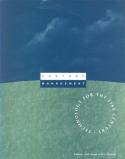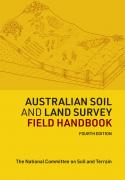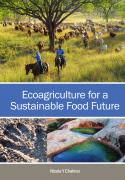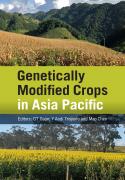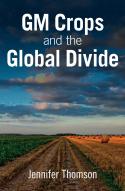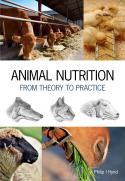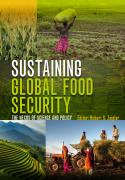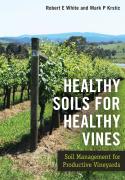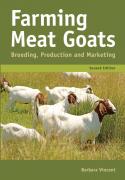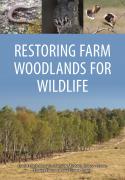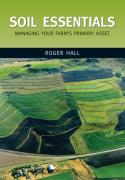This book looks at current knowledge on management of pastures and rangelands for sheep production, of problems, of practical solutions where possible, and of priority areas for research. The areas considered extend from the high rainfall perennial pastures of south-east Australia and New Zealand, through the annual pasture, cropping zones to the semi-arid rangelands.
Pasture Management is the major reference on managing Australia's greatest natural resource: the resource which provides directly and indirectly a major part of Australia's export income.
- Page ixAbstract
Grasslands are one of the world’s greatest resources, comprising nearly half of the earth’s land surface (Williams et al. 1968). Natural and sown grasslands provide most of the forage for the world’s ruminant and equine populations. Well managed pastures limit soil degradation and improve soil fertility. Over-population, though, is placing increasing pressure on grassland resources, with degradation and desertification becoming increasing problems in some parts of the world. It is evident that if the productive capacity of this global resource is to be sustained for future generations, management must be improved.
In Australia, pastures are one of our nation’s greatest natural assets and certainly Australian agriculture’s greatest resource. Native and improved pastures occupy some 60% of the land surface of Australia (approximately 460 m ha, excluding crops) and directly and indirectly generate income worth in excess of $12 billion per annum (Ockwell, 1990). Value adding provides substantial extra benefits to the national economy. Major industries such as wool ($3 billion direct to producers, 150 m sheep and 30% of the world’s wool production; Castles, 1989), cattle for meat ($3 billion and 19 m head) and dairy production ($1 billion and 3 m head) are based almost exclusively on pastures.
Pastures not only provide the basis for livestock production, but also improve soil fertility necessary to support the production of many crops and sustain the landscape. Grain production benefits substantially from a pasture phase in farming systems. In short, good pastures are the first line of defence against soil degradation in agricultural regions. Renewable pasture resources play a major part in sustaining Australia.
- Page 1Abstract
This paper presents an overview of the pastures present on high-rainfall perennial, annual crop zone and rangeland farms in the sheep grazing areas of Australia, as a background to the associated papers on their management. Information on the pasture compositions found on farms is summarised and the targets for management are discussed. A number of the more prominent pasture management issues are analysed.
In high-rainfall areas, annual volunteer grasses and broad-leaved weeds make up higher proportions of pastures than sown clovers and perennial grasses and there are significant invasions of weedy perennials of low productivity. Clover content is generally low and a significant proportion of pastures contain no clover, despite its known contribution to soil fertility and animal production. Also, the older varieties of subterranean clover and perennial ryegrass, which have poorer winter growth, remain dominant.
In the crop zone, pastures are almost wholly annuals, with a dominance of species of short growing season and low dry-season quality, such as Vulpia spp. The desired composition is driven more by the demands of the crop industry than the livestock industries, but both could benefit from the greater use of perennial species, such as lucerne, which provides a longer growing season and contributes nitrogen to the soil.
In the rangelands, native species remain dominant, but levels of more palatable perennials have been depleted and need restoration. Other needs are to reduce the levels of unpalatable shrubs, to determine optimum rates of pasture utilisation and to develop improved grazing strategies.
There is considerable scope for improvement in our understanding of the ecological management of mature pasture systems, and in the application of new technologies in pasture renovation.
- Page 26Abstract
This paper focuses on pre- and post-sowing management options which influence the survival of emerged seedlings. Factors normally associated with the sowing operation that affect germination and emergence will receive less attention. Emphasis is placed on the influence of climate, the role of grazing, and measures that affect pest and weed populations. It is argued that ecological principles taken from plant population biology provide the scientific basis for studying the process of pasture establishment. In particular, the concepts of the regeneration niche, disturbance and interference will be discussed in the context of pasture establishment. Working definitions of the term ‘establishment’ will be developed from a consideration of the population dynamics of sown pasture plants. The overriding influence of rainfall patterns on the growth and survival of emerged seedlings is illustrated by comparison of examples from the rangelands, cereal–livestock zone and permanent pasture zone.
The following research and development needs are detailed:
- ■
Collation and presentation of existing knowledge in a form useful for on-farm decision making
- ■
On-farm validation of experimental results, putting principles into practice
- ■
Comprehensive cost-benefit analysis for pasture sowing to justify high cost. Such analysis must: account for the risks of failure; include both direct and indirect benefits; and take a medium-term view so as to cover the productive lifetime of the pasture.
- ■
Bioclimatic analyses to identify optimal times for sowing and periods when the probability of seedling mortality is minimised
- ■
Decision support systems to assist managers to minimise the risk of failure of establishment. Such systems would aim to identify the best tactical decision given prevailing circumstances.
- ■
Technical limitations and problems which are often region-specific.
- ■
- Page 38Abstract
To remain viable in the face of the continuing cost–price squeeze, wool producers must increase their production efficiency. By definition this involves careful management of inputs to maintain or increase wool production. Phosphorus (P) fertiliser is a major input required to maintain pasture productivity, and its efficient use (in terms of animal production per unit of applied P) must demand increasing attention from Australian researchers. The stocking rate P rate interaction provides a model for examining improvements in biological and economic efficiencies that are possible with high P fertility, heavily stocked pastures containing productive, P-responsive species. High-P regimes appear to increase plant vigour, leading to increased legume persistence, digestibility and nitrogen fixation, as well as greater plant tolerance to moisture stress. The beneficial outcomes of high input systems are discussed along with suggested approaches to assist in their adoption by producers.
Improvements in the economic efficiency of P applications might be possible for Australian wool producers if they apply P fertiliser forms other than single superphosphate. Cost savings can be achieved with reactive phosphate rocks (RPRs), and to a lesser extent with high-analysis forms. The success of any RPR strategy will depend on the soil/climate/pasture environment in which the RPR is used: high dissolution rates of this material will be essential for it to be effective. The magnitude of cost savings from alternative P forms will depend on the requirements of the pasture for S. The continued development of more reliable soil and plant tests for S is recommended. Also, the demand for S by productive pastures needs to be assessed in different environments, along with an appraisal of the ability of alternative fertilisers to supply adequate S to the pasture. Potassium, like sulfur, is a mobile nutrient in the soil so management strategies and products need to be developed to improve K-use efficiency in light-textured soils. Less soluble K fertilisers and practices that will improve the availability of soil K reserves require further attention from researchers.
The identification and correction of trace element deficiencies of newly sown pastures is reasonably simple, but maintaining adequate supplies of these nutrients in established pastures is more difficult. The development of diagnostic tests has helped but research needs to be continued to provide a better understanding of the complexities of trace element nutrition in both plants and animals.
- Page 53Abstract
This paper provides a brief synopsis of modern pastoral farming principles, followed by a review of key New Zealand work on pasture management processes and the consequences of seasonal management. The interaction of photosynthesis, respiration, senescence and intake is examined in view of its implication for optimising grazing intake. The compensatory mechanisms that exist in the plant–animal interaction are used to determine where benefits to either rotational grazing or set-stocking may apply.
The relative importance of management strategies such as feed profiling (stocking rate decisions, time of lambing), feed budgeting (overcoming deficits/surpluses), and grazing plans (rotation lengths and area grazed) are discussed. Critical parameters for New Zealand livestock systems are identified, taking examples primarily from sheep farming.
Winter management is dominated by pasture rationing. The reasons for rotation lengths of 60–100 days and the use of supplements or deferred grazing areas in late autumn to start a rotation are discussed. Critical parameters, such as pasture mass at the end of winter and the use of pasture in early lactation rather than late pregnancy are identified.
Spring management is aimed at pasture control. Where conservation is not possible, decisions must be made on priority areas for control and areas set aside for deferred grazing. The importance of maximising intake by either fast rotations (<20days) or continuous grazing is stressed. Pastures are less stable in spring and winter, thus giving the scope for positive (legume dominance) or negative (loss of tiller density) changes.
Summer management concerns control in moist areas and feed budgeting, with sale of disposal stock in drought areas. The importance of avoiding patch grazing is stressed. Deferred grazing areas can be used from mid-summer onwards, especially by cows and calves.
Autumn management should aim at pasture recovery consistent with establishing a sustainable winter rotation. Critical factors are the use of feed budgeting, the achievement of liveweight targets, and grazing plans to control diet-dependent disorders such as facial eczema.
- Page 62Abstract
Loss of sown perennials from temperate pastures is widespread, particularly under continuous grazing. The problem can reflect a lack of attention to managing the grazing process with the goal of sustaining a mixture of nutritious species that are well adapted to climate and to defoliation. Animals affect plants by selective grazing, fouling with excreta, redistributing nutrients, spreading viable seeds and by treading, which can damage plant growing points and compact the sod, resulting in reduced water infiltration and habitat for useful biota.
In the narrow sense, grazing management involves control of animal movement to vary the timing, period, frequency and intensity of grazing with objectives such as rationing pasture, controlling botanical composition, increasing pasture growth by optimising light interception, improving the distribution of nutrients from excretal return, and reducing parasite transmission. Set-stocking and continuous grazing is, in effect, the zero option for grazing management. In the wider sense, it must be recognised that management decisions on overall stocking rate, type of animal, timing of reproduction, and the use of fertiliser, mechanical cutting and supplementary feeding can have powerful and interactive effects on the achievement of goals that are set for grazing management.
The challenge is to develop clear guidelines for grazing management through research, synthesis and practical experience. There are major gaps in knowledge of the interactions between climate, the grazing process and the regenerative capacities of the grazed plants. This review provides the background needed to plan and to achieve realisable goals through managing the grazing process in temperate, high-rainfall pastures through:
- ■
Drawing attention to concepts from ecology which underlie the stability of grazing ecosystems
- ■
Reviewing the results of field experiments that show significant changes in the botanical composition of pastures
- ■
Outlining the rules and the claims for schemes that have been proposed for controlling grazing
- ■
Presenting a strategy for fitting the management required for maintaining a desirable level of botanical stability into the wider objective of managing for sustainable and profitable animal production in a pasture-based, farming enterprise
Alternatives to grazing management will be presented. These include a combination of grazing management with the tactical use of herbicides. Herbicides should be used tactically because of their cost and the potential build-up of plant resistance. Modern herbicides are relatively benign from the environmental point of view; however they do have short- to mid-term residual effects which extend the time for target replacement of weedy species with desirable plants. The possible effects of herbicides on useful symbionts and heterotrophs should also be evaluated. Another alternative is to accept a decline in species composition and plan to renovate or replace pastures more frequently.
- ■
- Page 71Abstract
Flexible management practices are the best, and perhaps the only, way of coping with seasonal variability in pasture growth rates. Season and management influence pasture production more than introductions of new species or cultivars of pasture plants. The value of fertilisers depends on the efficiency of pasture utilisation, within the limits set by seasons. The ultimate objective in growing pasture is to produce a specified animal product while sustaining those pastures.
Traditional set stocking practices assume similar plant growth rates over many seasons, even though between-season variation gives rise to considerable variation in animal product, pasture production and composition. Stocking rate trials have often applied the same treatments to plots year in year out, without taking into account seasonal effects. Mangement practices must take into account the requirements of different classes of livestock and the rate at which they consume feed in relation to plant growth rate (grazing pressure) to cope with variation between seasons and to maintain sown species inimproved pasture.
Rather than describe grazing management as a ‘system’, such as a set stocking system, it may be better to define the criteria for tactics that can be used in response to observed events or conditions as the season progresses. Definition of the tactics must include their effects on objectives for animal production, and pasture growth and persistence.
Early in the growing season, when the main risk factor is overgrazing, the main management alternatives include deferment of grazing until a critical plant mass is reached; nitrogen applications to grass/broadleaf-dominant swards; pest control; and strip (ration) grazing. The choice of tactics depends on what happened in the previous spring, summer, and autumn. Late in the season the main risk factor is undergrazing and the main alternatives include intensive grazing; pasture manipulation (physical or chemical topping); fodder conservation; and pest control. Pasture is an important part of the rotation in the annual cropping zone. Cropping may result in productivity penalties on the pasture in the following year due to reduced plant density, loss of grasses, and reduction in legume seed set under the crop. Tactics are needed to deal with these effects.
We conclude that grazing management needs to be flexible to cope with seasonal variability, in order to produce a specified animal product (liveweight, fertility, fibre characteristics). Research objectives should:
- ■
Define critical values of feed on offer for optimising objectives for animal production, pasture growth rate, dry matter utilisation, and acceptable seed production for pasture persistence.
- ■
Develop criteria for pasture assessment and animal measurements that allow choice of the best grazing tactics. These skills must be something that farmers can learn and use.
- ■
Develop ‘decision trees’ that enable best-case/worst-case projections to be made for a season, and that can be updated with actual measurements on a monthly basis through the season. The purpose is to plan for best-bet grazing tactics, since many stock factors cannot be changed at short notice. Current computer models of pasture growth are not robust enough in their predictions for annual production, but may be useful for short-period projections with input from regular animal and pasture monitoring.
- ■
- Page 91Abstract
Rangelands contain many diverse interacting species and growth forms. Climate and soil are major factors that influence the biomass, composition and productivity of rangeland pastures but grazing can also be important. This paper will consider four major questions in relation to herbivore-induced changes in vegetation.
What changes occur in rangeland vegetation in response to grazing? Grazing by livestock, rabbits, other feral animals and large kangaroos has contributed to change in rangeland vegetation since European settlement. Changes include the proliferation of unpalatable endemic shrubs, a decline of perennial grasses, elimination or reduction of perennial chenopods, an increase in the undesirable grasses such as Aristida spp., and the failure of recruitment in some common palatable trees and shrubs. The introduction of exotic species has led to major shifts in the species composition of pastures. Mediterranean annuals have invaded, with some species becoming pasture weeds and others useful sources of forage. In many areas, unpalatable indigenous shrubs and exotic grasses and forbs will continue to proliferate or occupy new areas. There is insufficient information to adequately describe continuing long-term trends in the composition of the herbaceous layer or the implications of these trends.
What are the mechanisms by which changes occur? Mechanisms of change in rangeland vegetation include grazing-induced mortality of perennial grasses and chenopods, reduced perennial grass seed production, release from competition for annuals, shorter-lived grasses, some chenopods and the seedlings of unpalatable shrubs, and enhanced mortality of the seedlings of a range of palatable trees and shrubs. The interaction of fire and grazing has been important in many communities. Changes in soils and microtopography are important in relation to changes in pastures. In some circumstances, soil changes may mean that a deterioration in pastures is irreversible within a reasonable timeframe or likely economic scenario.
What constitutes a desirable pasture? There have been few attempts to measure the benefits and disadvantages of pastures that vary in biomass and composition. The costs incurred by the presence of dense stands of unpalatable shrubs have been quantified for some areas. It is commonly assumed that a prominent perennial grass component is desirable in many of our range types. However, while it has been shown that the presence of these grasses can reduce shrub establishment and have benefits in terms of soil–water relations, there has been little quantification of their impact upon animal production.
What management practices are available to bring about change? In general, management has emphasised animal condition and productivity rather than the pastures upon which the animals depend. Management must also focus on deliberate manipulation of rangeland vegetation using herbivores. Goals and strategies for using herbivores to manipulate rangeland pastures must be developed and promoted. Continuous stocking of pastures has remained the usual approach in most Australian rangelands but non-continuous grazing may benefit desirable pasture components. Rigid grazing systems are inapplicable. Rather, management must be responsive to crucial episodic climatic events. It should consider both long- and short-term implications of particular strategies and should not attempt to manipulate individual components of the system in isolation.
- Page 100Abstract
The sustainability of a grazing system requires that the partnership between animals and plants is both biologically and economically sound. Many properties in Australia fail to generate enough income to be able to maintain their pasture resource. Australian wool is produced from a wide range of climatically and ecologically diverse regions. Each has differing constraints that hinder the long-term success of wool enterprises. In the majority of cases, a mismatch between the energy and protein available from pasture and the nutritional demands of the flocks and herds is the most important biological limitation. Changes to time of lambing, time of shearing and flock structure, in conjunction with manipulation of the pasture base, are the most powerful tools for improving the grazing system. For example, across southern Australia, the slow winter growth rate of pastures restricts the number of sheep that can be carried on a property year round. Pasture cultivars that improve winter growth will have a great impact on annual carrying capacity in these regions. Many producers in southern Australia amplify the mismatch between winter feed and animal requirements by lambing in autumn, thus maximising the flock’s demands for nutrients at a time when pasture availability is at a minimum. Lambing in late winter/spring is a cheap and effective method of increasing annual carrying capacity. However, a combined approach, in which time of lambing is changed and pasture growth rate in winter is increased, has the most potential for long-term improvement.
Failure to meet the nutritional requirements of some classes of stock will cause severe loss of production and can result in deaths. This is unacceptable from both animal welfare and economic viewpoints; ewes in late pregnancy and lactation, and sheep during their first year of life are particularly vulnerable. Any grazing system must accommodate their particular requirements. Lactating animals have more than double the energy requirement of a dry ewe and need to be eating close to their maximum voluntary intake in order to maintain adequate milk production. Pastures with less than about 1.3 tonnes of dry green matter per hectare will not allow them to achieve this. Wethers increase the flexibility of grazing management. They are able to remain productive on pastures as low as 0.5 tonnes of dry green matter per hectare, and for short periods can be stocked heavily when it is advantageous to the pastures or when extra pasture is required by other stock.
Lamb survival is particularly sensitive to perinatal ewe nutrition. Lamb growth rate to weaning is important, since the weaned lamb cannot afford to lose bodyweight until it has adequate fat reserves. Weaners will not be able to maintain live-weight on pastures with less than about 12% green material without supplementation. Infection with internal parasites, and other factors such as trace element deficiencies, can interfere with the efficient utilisation of pastures by sheep. Grazing strategies should provide parasitologically safe pastures for vulnerable stock; some strict rotational patterns of grazing do not allow this.
All too often the choice of pasture species and the requirements for renovation of pastures are made on agronomic grounds alone. Tailoring pastures to meet specific grazing systems requires a knowledge of the annual cycle of pasture growth and animal nutrient requirements, an assessment of the short- and medium-term economic implications of any change, as well as a long-term overview of the sustainability of the proposed animal–pasture grazing system. This integrated approach to the animal–pasture partnership is necessary to ensure the long-term economic stability of the pasture-dependent grazing industries.
- Page 117Abstract
Current management: what & why? To illustrate the wool production system in the annual pasture zones of Australia this paper outlines the climate, soils and pastures of the ‘average’ extensive sheep farm in the Great Southern Region in Western Australia. It details how we have developed a more productive property within the constraints of that zone compared to that of the average producer. We have taken this approach not only for economic survival, but also for personal achievement. This management program emphasises wool production from grass/clover pastures, often to the detriment of the cropping program (15% cropped to oats, half sold and the other half used for supplementary feeding). We previously ran 35% Merino breeding ewes (in a cooperative breeding scheme), but while developing the new program we have reduced ewe numbers to 8% and use more dry sheep, a proportion of which are bought in each year. Once the system is in place we expect to increase ewe numbers again. Lambing takes place in July and shearing in January/February. Over the next few years we will concentrate on better use of fertilisers, conserving the spring surplus, introducing different species and more resowing of pasture.
Future directions: Future developments in technology require us to take a long-term view of likely trends in agriculture. Among these are two alternatives we need to evaluate. The first is the continued use of high-input systems (e.g. high fertiliser) which may be unsustainable in the medium term (50–100 years). The second is to develop more sustainable low-input technologies, though these appear less productive at the moment and still have to be defined. Given these two directions, future research should target the following:
- ■
Emphasis on animals as an integral part of pasture management systems – they can complement cultural practices while growing wool etc.;
- ■
Development of discrete packages of information which producers can piece together into systems that suit their unique physical and economic environments – we need to clearly understand the biology of these packages;
- ■
Provide better economic assessment of new technology as producers are reluctant to adopt new systems unless convinced of their economic viability; both long- and short-term gains need to be considered.
More emphasis needs to be placed on extension. Without extension research is basically useless.
- ■
- Page 125Abstract
The high-rainfall perennial pasture zones provide the opportunity for more intensive, sustainable animal production than is commonly achieved. This paper illustrates these points with experience from Tasmania. The topographically diverse sheep production zones of Tasmania, including the central plateau (summer grazing only) the midlands and the coastal zones, are considered. Seasonal variability is illustrated by comparing the past few years with long-term averages, particularly for central northern Tasmania where our farm is located. The physical features (topography, soil types, rainfall, water availability) and infrastructure (stock water and irrigation facilities, pasture/bush blocks, internal laneways etc.) are described. Over the past decade we have made significant improvements to our farm which was in a generally run-down condition when we moved there in August 1980.
Pasture renovation was commenced to improve soil fertility and change species mixtures to suit various soil types. Soil analysis formed a critical part of this program, as trace element deficiencies restrict livestock performance in this area. All our fertiliser inputs are based on soil tests. Aspects of pasture management throughout the season are discussed, including block grazing, hay-making, irrigation, weed problems and attacks by grubs. Dung beetles have proved beneficial to pasture production, and worms will be introduced in the near future.
Pastures and crops are integrated into our farm operation. Initially oil poppies, canning peas, turnips and rape were the main cash and fodder crops but seed mustard, seed cabbages, esk oats and concord ryegrass were sown in 1991.
Livestock activities integrate wool sheep and cattle fattening enterprises. Changes in stocking rates for 1980 and 1991 are compared. Replacement ewes and wethers (Merino) are bred on the property but cattle are purchased as required. Block grazing of sheep and cattle form an integral part of our management plan. Mechanics of the system are outlined including the length of paddock rotations, day by day running; and strategies during the winter period. The benefits of block grazing include enhanced soil fertility, reduced herbicide use due to less thistle invasion and areduced drenching program; supplementary feeding strategies are also discussed.
Current economic circumstances have caused us to change our farm management plan Cash cropping was expanded after several years break, sheep culling and footrot strategies have been revised, and cattle fattening has been increased at the expense of sheep numbers due to reduced wool income.
Higher-producing and more grub-resistant pasture varieties (e.g. cocksfoot compared to ryegrasses etc.) are viewed as high priority research areas. Strategies to improve and manage soil structure to sustain crop yields are also required.
- Page 130Abstract
The productivity and pasture management problems of the semi-arid rangelands will be illustrated with experience from western New South Wales. The productivity of rangelands in the Broken Hill region is dependent on maintenance of native perennial grasses such as Mitchell grass and edible shrubs including saltbush and bluebush. Carrying capacity varies greatly with seasonal conditions and the plant species present in a paddock. At our property ‘Koralta’ we average about 6 ha/DSE, but on occasions stocking rates may reach 3 ha/DSE. Soils vary from low-fertility sands to very productive black soil in flood plains. The most appropriate land use in the region is often wool production although annual displacement of aged ewes, wether hoggets and cull ewe hoggets can generate significant income in some years. Rainfall is erratic and so management must be geared to take advantage of rain whenever it falls.
Shrub control and maintenance of a vigorous perennial pasture is the key to good management of rangelands. Woody weed invasion has already reduced production to one third of potential on five million hectares and threatens an additional twenty million hectares. Many properties with dense shrub cover are not viable. Budda, turpentine, hopbush, punty African boxthorn and cassia are problem species which often reach densities of many thousands per hectare.
Chemical and mechanical methods are being used to eradicate sparsely populated plants and to remove a source of seed. However, the logistics and cost of herbicide application to shrub populations exceeding 1000 per hectare are out of proportion to the productivity and value of the land. For effective use of herbicides, more information is need to define the seasonal period when shrubs translocate carbohydrates to roots. Application of chemicals at this time would maximise kill with minimum rates. Blade ploughing, chaining and fire are the main methods used for reclamation of invaded areas. Except for marginally arable areas, the economics of mechanical reclamation are prohibitive. This is due to an inability of desirable perennial grasses and forbs to re-colonise quickly after soil disturbance. Introduced perennial grasses selected for their ability to compete with shrubs are needed to enable managers to optimise rangeland vegetation. The feasibility of using goats and fire either alone or in combination with mechanical and chemical methods is under study.
Grazing systems are also needed to suit the specific needs of desirable plant species. Positive responses to deferment of grazing during critical periods in the life cycle of the main species have been documented for range types of low resilience. However, further detailed studies of the life history of both desirable and undesirable (e.g. barley grass, low-value shrubs) species under various grazing pressures and systems are needed to enable the merits of grazing strategies such as the Savory and Merrill systems to be evaluated on Australian rangelands.
Rabbit control and exclusion of kangaroos are also important components of grazing systems, as positive impacts of livestock removal during deferment may be countered by an increase in grazing pressure of non-domestic animals resulting in undesirable increases in low-value trees and shrubs.
- Page 137Abstract
Pasture is a complex commodity with a range of end uses. The management techniques employed to manipulate the timing and type of production from the pasture are determined to a large extent by the production system that is chosen by the farmer. This management system will most often be that assessed by the farmer as contributing most to the economic viability of the farm. The choice of systems will be influenced by both the physical characteristics of the farm and the planning horizon of the manager. Pasture management at the farm or paddock level is discussed in this paper based on the author’s experience as manager of a wheat–sheep property in southern NSW, as an agricultural consultant and as a member of FarmFacts.
The yield of pasture and animal product depends on the system chosen, and is limited primarily by the amount and distribution of rainfall. Other factors which may limit the efficiency of rainfall utilisation include disease and nutrient supply. The yield and value of animal product obtained from a pasture depends on the quantity and quality of the pasture, and the harvesting efficiency of the grazing animal. Pasture management must initially focus on the manipulation of pasture quality.
Pasture quality can be considered as the pasture composition which most closely matches the needs of the saleable product being produced. In general, legume-dominant pastures are preferred to grass pastures for animal production, especially when integrating pastures and cropping systems. Some enterprises, such as autumn lambing, can result in the development of grass-dominant pastures whereas winter lambing can help to maintain legume dominance. New pasture cultivars and herbicides give the farmer close control of pasture composition. It is possible to shift the balance of a mixed pasture toward any of its major components (grass, legume, broad-leaf weeds) using different combinations of chemicals and grazing methods. These techniques have short- and long-term effects on the whole farm system. However, at present the effects are not well understood and techniques need to be used with care
A major constraint on producers is the very low returns for agricultural produce relative to that required for the economic and agricultural sustainability of their properties. Estimates of the price increases required for farm produce in southern NSW, to ensure the sustainability of agriculture, range from 300 to 500%. Without better prices for farm produce, most producers will be forced to continue more exploitative than sustainable practices. Research needs to concentrate more on improving the efficiency of whole systems than on studying isolated components, and to avoid increasing production, as lower prices are the likely outcome.
- Page 149Abstract
A major function of the workshop at which the foregoing reviews were presented was to decide research priorities relevant to pasture management in Australia for use by Research & Development organisations when allocating research resources. The approximately 100 participants at the workshop, after hearing the reviews presented, were asked to discuss those issues they regarded as being most important. After rating those issues for each of the major livestock grazing zones (rangelands, annual pastures and perennial pastures), they then allocated notional research funds among issues, within each topic discussed and within each of the grazing zones. Those results were then collated across all groups into common topics and the issues within those topics. Priorities were ordered on the basis of notional funds allocated to, and the ratings of, issues.
The most important issues within the major topics were:
- ■
Grazing management – improve the ability to manipulate pasture composition and achieve a higher level of utilisation by livestock, based on a better understanding of the ecosystem, including rules for pasture manipulation, feed profiling and budgeting.
- ■
Technology transfer – improve transfer of technology on pasture assessment and establishment, and develop support systems for grazing and farm management practices, including systems that integrate species, environment and management.
- ■
Nutrition – improve the understanding of nutrient cycling under extensive and intensive grazing systems in the annual and perennial pasture zones.
The more important issues within minor topics were:
- ■
Establishment – develop techniques to improve the recruitment and establishment of key species in the rangelands.
- ■
Farm management – develop integrated packages that assist in overall farm management and facilitate understanding of the consequences of practices both on and off the farm.
- ■
Resource base – improve knowledge of the pasture resource base’ improve techniques for the management of non-domestic animals in the rangelands.
Other minor issues were raised under the headings of pasture species, animal production and training.
Many of the priorities raised relate to more efficient utilisation of the fodder produced, rather than seeking to produce more pasture, reflecting the interest in developing more efficient and sustainable systems. The principles that emerge from pasture management programs, especially the grazing management programs, are likely to apply to extensive and intensive systems alike.
- ■
- Page 155Abstract
Pasture management is acknowledged as a major issue for Australia. Degradation of pasture ecosystems has occurred and they are not as productive as considered possible. The need to better understand grazing systems has been acknowledged as a major research issue, particularly managing the grazing process to achieve or maintain, a desirable botanical composition and to improve nutrient cycling. This chapter considers some of the general issues that need to be taken into account when developing programs to satisfy these research aims.
Sustainability of pasture ecosystems is an important practical and environmental goal. Relevant aspects of sustainability, its major components and a framework for measurements are discussed. Sustainability indicators are considered in terms of likely mechanisms and those that producers could use. The ecological theories that have been developed to understand and predict vegetation change are then discussed as further background to developing research programs. The problems with ‘succession and climax’ theory are considered and it is suggested that ‘state and transition’ models are likely to be more appropriate for many natural and sown pastoral ecosystems. Methods of defining ‘states’ using ‘cup and ball’ analogies and the ‘pasture management envelope’ for producers are outlined. The limited data that exist at present provide the challenge to develop current theories towards practical outcomes. Problems in identifying thresholds for management decisions are acknowledged, but it is suggested that developing producer skills in pasture assessment, will help those decision considerably.
Directions for new grazing systems need to be considered so that the aims of sustainable, productive systems are achievable. Leavening agronomy with ecology should provide the tools to develop better grazing systems. A key aspect is that pastoral systems are tending towards more quality products which will emphasise per animal performance. Grazing systems need to take that into account and use that trend as an opportunity for better techniques. The resources required to satisfy these developments include the need for multidisciplinary teams, longer-term commitments and a large component for technology transfer.


